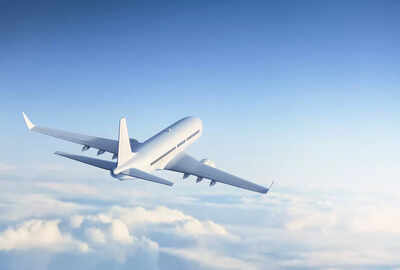The Directorate General of Civil Aviation (DGCA) has proposed a significant policy shift that would allow students from arts and commerce streams to enroll in commercial pilot training programs in India.Traditionally, only students who had studied Physics and Mathematics in Class 12 were eligible to pursue a Commercial Pilot License (CPL). The new proposal, pending approval from the Ministry of Civil Aviation, aims to open aviation careers to a broader pool of candidates.
What changes are proposed by DGCA?
The DGCA has proposed certain changes to the eligibility criteria for the commercial pilot training. As per the proposal, one must have passed class 10th from recognised boards and institutions in the country for the following licenses:
- Student pilot’s license for aeroplanes, helicopters, gyroplanes, gliders, balloons, microlight aircraft and light sport aircraft
- Private pilot’s license for aeroplanes and helicopters
- Pilot’s license
- Flight radio telephone operator’s license
Meanwhile, the applicants must have passed their class 12th from recognised boards and institutions, regardless of their stream, in order to apply for the following licenses:
- Commercial pilot’s license for aeroplanes and helicopters
- Airline transport pilot’s license for aeroplanes and helicopters
A step toward inclusivity
The proposal seeks to eliminate the existing requirement of having studied Physics and Mathematics in Class 12 for those aspiring to become commercial pilots. This change could significantly widen access to the aviation industry by opening the door to students from diverse academic backgrounds who were previously ineligible.It also aligns with international norms, where many countries do not impose subject-specific barriers for pilot training. With India’s aviation sector experiencing rapid growth and a rising demand for commercial pilots, the policy could help address talent shortages. Furthermore, the move supports the vision of the National Education Policy (NEP) 2020, which emphasises inclusive, skill-based learning over rigid academic pathways.
Academic readiness a key concern
Despite the positive intent, the proposal has raised concerns regarding the academic readiness of non-science students. Commercial pilot training involves complex subjects such as flight mechanics, navigation, and meteorology—all of which rely heavily on foundational knowledge in physics and mathematics.Students from non-science streams may struggle with these technical aspects, potentially impacting their ability to keep pace with the curriculum. To address this, training institutions may need to introduce additional foundation courses. However, this could increase both the duration and cost of training, making it less accessible for some candidates.
Safety and training standards in focus
Another critical concern is the need to maintain safety and competence in an industry where pilots operate in high-stakes environments. Commercial aviation requires quick decision-making and a deep technical understanding. Ensuring all candidates meet uniform standards—regardless of academic background—will be essential.Flight schools may face added pressure to update their curriculum, hire specialised faculty, and introduce bridging modules to help students catch up. There is also the challenge of standardising assessments and ensuring consistent training quality across institutions.
Next steps and implementation
If approved, the policy will require the DGCA and training academies to issue clear guidelines on eligibility, curriculum changes, and academic support measures. Standardized entrance assessments could be introduced to evaluate candidates’ aptitude for handling technical subjects.While the move could democratize access to the aviation profession and meet growing industry demand, its success will ultimately depend on how well the education and aviation sectors adapt. Ensuring that safety, competence, and quality are not compromised will remain the top priority as India charts a new flight path for pilot education.












